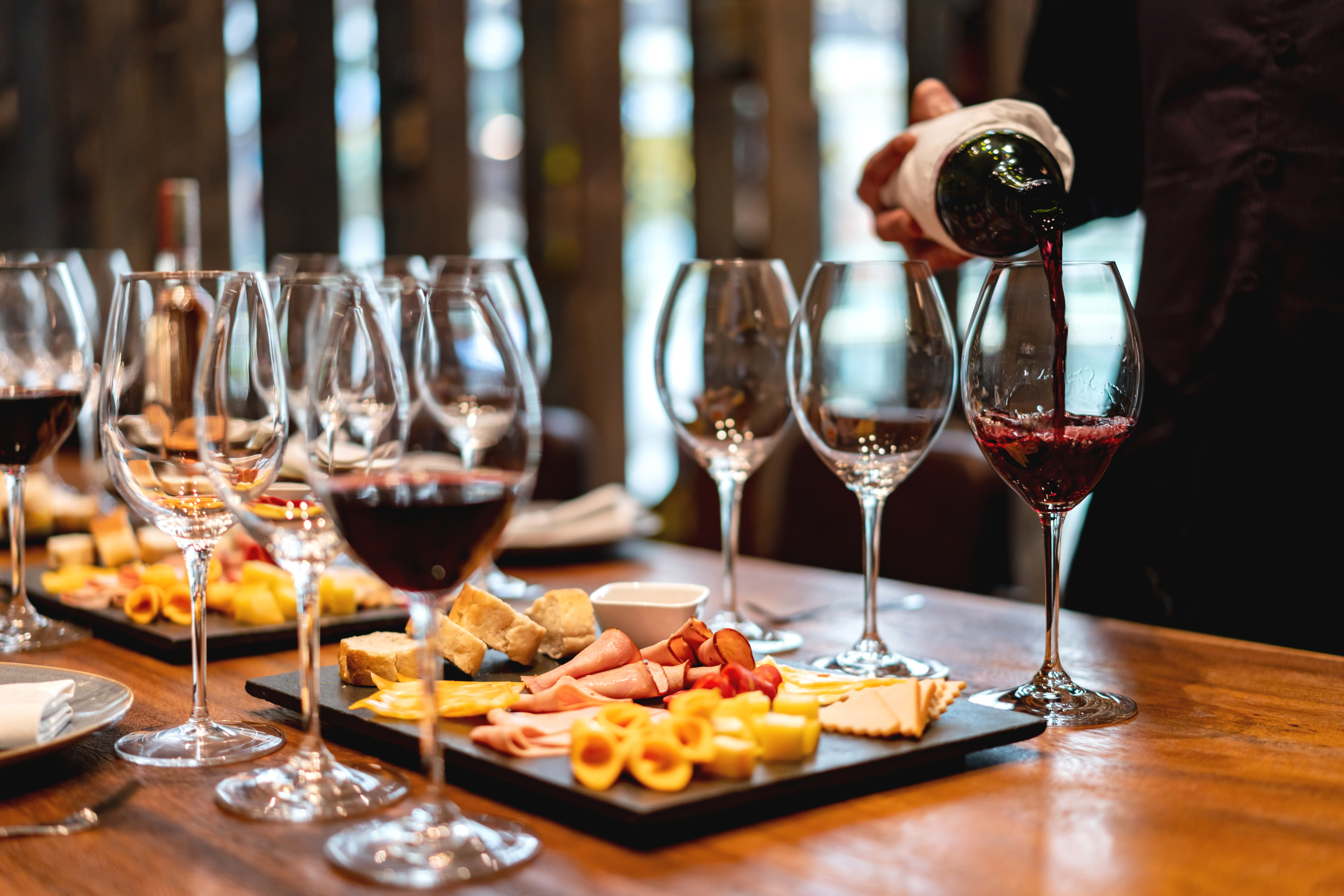Wine is more than a beverage – it’s a journey of flavors, history, and culture. Whether you’re a seasoned connoisseur or you’re just beginning to explore the world of wine, understanding how to taste, pair, and serve wine can enhance your experience and delight your guests.
The Fundamentals of Wine Tasting
Wine tasting is an art that engages the senses and celebrates the complexities of a wine. Here’s a step-by-step approach to tasting wine like a pro:
1. Observe
- Color: Tilt the glass and observe the wine’s color. Depending on grape variety, age, and winemaking, white wines range from pale yellow to deep gold, while reds can be purple, ruby, or garnet.
2. Smell
- Swirl: Gently swirl the wine in the glass. This action releases the wine’s aromas.
- Sniff: Take a deep sniff to appreciate the wine’s bouquet. Common descriptors include fruity, floral, herbal, earthy, or spicy notes.
3. Taste
- Sip: Take a small sip and let the wine coat your palate.
- Observe: Is the body light, medium, or full? Is the wine dry, lightly sweet, or sweet? Is the acidity, tannins (red wine) and alcohol low, medium, or high? How long does the taste linger on the palate?
- Consider: Do the same descriptors used for the bouquet apply to the taste as well?
4. Evaluate
- Complexity: Does the wine have multiple layers of flavor?
- Harmony: Are the elements (acidity, sweetness, etc.) well-balanced?
Perfect Pairing: Wine and Food
1. Match intensit
- Light dishes: Pair them with light wines like Sauvignon Blanc or Pinot Grigio.
- Rich dishes: Opt for full-bodied wines such as Cabernet Sauvignon or Syrah.
2. Consider the sauce
The sauce or seasoning often dictates the best wine choice. For example, a rich, creamy sauce pairs well with a Chardonnay, while a tomato-based sauce complements a Barbera.
3. Balance flavors
- Sweetness: Match sweet wines with spicy or savory foods. For instance, a Riesling goes well with spicy Thai dishes.
- Acidity: Acidic wines like Pinot Noir can cut through the richness of fatty foods, such as duck or pork.
4. Regional pairings
Often, local wines pair well with local dishes. For example, a Chianti pairs beautifully with Spaghetti Bolognese
Serving Wine: Best Practices
Proper serving techniques can elevate the wine-drinking experience. Here’s how to serve wine correctly:
1. Temperature matter
- Red wines: Serve slightly below room temperature (around 60 65°F).
- White wines: Serve at 45 50°F to accent fruit flavors and crisp acidity.
- Sparkling wines: Serve well-chilled at around 40 45°F.
2. Use the right glasswar
- Red wine glasses: Typically have a larger bowl to allow for aeration.
- White wine glasses: Smaller bowls to maintain the wine’s cooler temperature.
- Sparkling wine flutes: Designed to preserve bubbles and focus aromas.
3. Pouring tip
- Amount: Serve about 5 ounces for wine by the glass. When serving a bottle of wine, always pour to leave enough room to swirl the wine. Do not overfill the glass.
- Technique: Hold the glass by the stem to avoid warming the wine. Pour slowly and steadily. Turn the bottle slightly clockwise and lift as you finish pouring to prevent drips.
4. Wine preservation
To keep wine fresh:
- Coravin system: Allows you to pour wine without removing the cork, preserving the remaining wine.
- Wine fridges: Maintain optimal temperature and humidity for long-term storage.
Experiencing a glass of wine is an exciting journey for the senses. With just a little bit of preparation and understanding, you can navigate the art of tasting, pairing, and serving wine with confidence.
Southern Glazer’s Wine Team
Date Published
October 24, 2024




